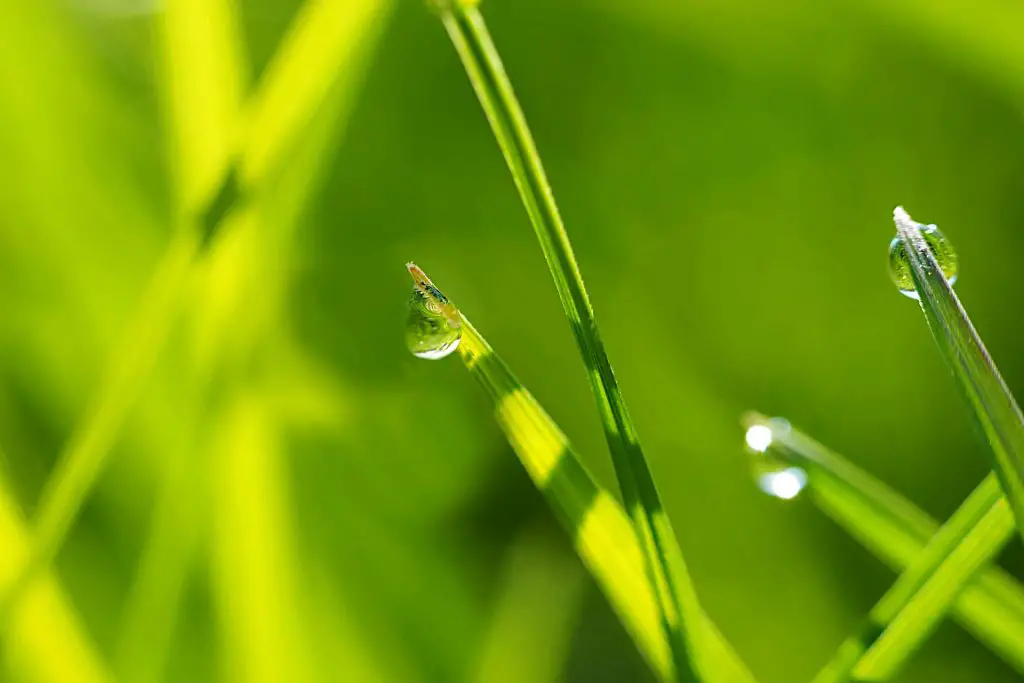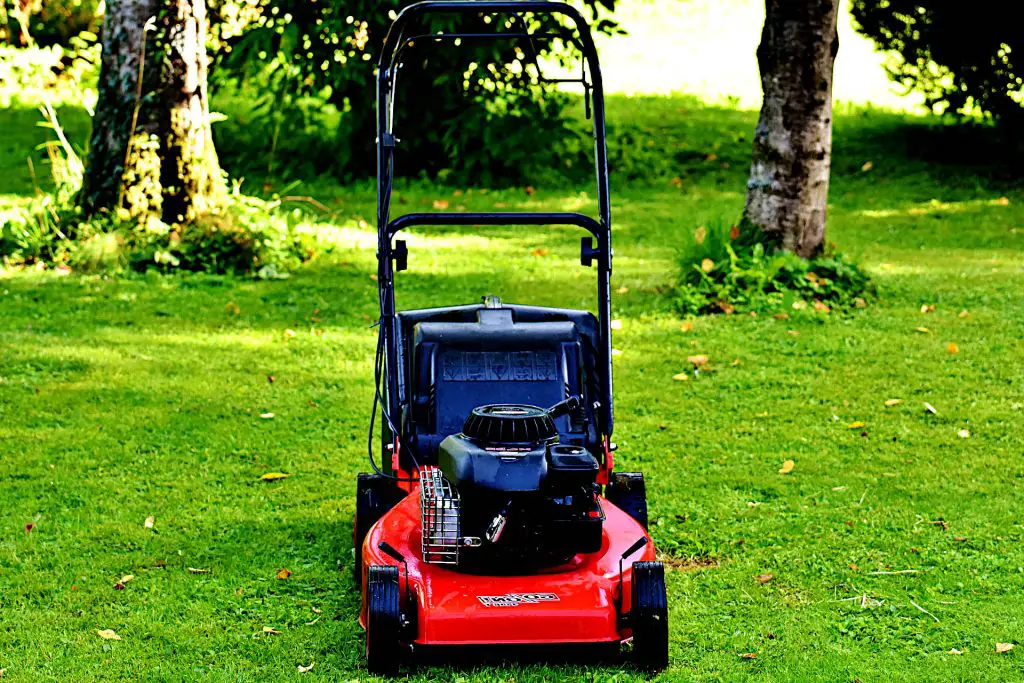Hydroseeding Lawn Maintenance: How To Care for Your Newly Hydroseeded Lawn Properly
The contractors have gone your ground has been hydroseeded what next? Well, quite a lot has to happen over the course of the next couple of months. While hydroseeding is an exceptionally efficient and effective way of putting down seeds, just as if you dry seeded or laid sod, it requires a proper aftercare regime if you want to see the best possible results.
Hydroseeding is not a magic bullet. Although sometimes referred to as ‘spray-on grass’ it is far from that. Indeed, hydroseeding is just a process of putting down the grass seeds from which your new lawn will grow. Once you have hydroseeded it is the moment that the work really starts as it will need a lot of attention and care, especially in the early weeks.
In the first three to four weeks of the hydroseeding, the area is going to need a considerable amount of watering, fertilizing at the correct interval and careful mowing when the grass has grown tall enough. They all need to be got right because watering too much and at the wrong time can damage your lawn, using the wrong type of fertilizer could hinder the establishment of the grass and mowing at the wrong depth can damage the grass. We will look at the best practices for how to care for your newly hydroseeded lawn properly and provide which you can use as a guide for a good maintenance program.
Watering after Hydroseeding

The most important component of any hydroseeding aftercare plan is watering as watering the grass seedlings on a consistent basis is essential in the early stages of their germination and development.
For the eighteen to twenty-four hours or so after hydroseeding, you should let the slurry dry out. After this, it is then important to water the area regularly. This ensures that the soil doesn’t become dry and that the seeds can germinate properly. To do this, you need to water your lawn thoroughly. You also need to water it correctly.
However, it is not simply a case of just watering. You have to be careful to apply the right amount of water at the right time of day. Too much water can cause the soil to become saturated leading to the seeds drowning or root rot, while watering in the height of the days heat can lead to evaporation.
How to Guage the Moisture Level in Your Soil after Hydroseeding?
When watering it is imperative to make sure that the soil gets the right amount water during the germination phase. As we have stated too much water could cause the seeds to rot, while too little water could prevent them from germinating.
The right amount of water can be subjective, but in general, the soil should remain moist. There are several ways to measure how much water your lawn needs. The simplest way is to check the soil moisture level. Soil moisture levels range from 0-20%. You should aim to keep the soil moisture around 10-15%.
The most obvious way to judge is by using touch and sight, if surface water sits on top of the ground and doesn’t immediately soak away, then the soil is too saturated and you are watering too heavily. If the ground is dry to the touch then the soil is thirsty and needs watering.
Another way to estimate soil moisture is to use a soil probe. These probes are inserted into the soil and measure the amount of water in the top six to eight inches of soil. They come in different sizes and ranges, some working in conjunction with your irrigation system and others that test at multiple depths.
You may also look at getting a rain gauge. Rain gauges are used to measure rainfall. Depending on your climate and prevailing weather conditions, rainfall can affect the number of times and amount that you water.
How Often Does a Hydroseeded Lawn Need to be Watered to Maintain Moisture Levels?
It is difficult to answer exactly how often you should water after hydroseeding. Much will depend on the climate, the time of year, and the daily weather. As we have mentioned, it is important to keep the soil moist so, you will need to water as much as is necessary for this to remain so.
In rough terms, this is likely to be two to three times a day in the first couple of weeks as the seed germinates. Various species germinate at different times, which also depend upon various climatic conditions. However, the majority of grasses germinate in seven to fourteen days, Certain species though,such as Kentucky bluegrass, might take between twenty to thirty days to germinate. As a general rule, the smaller and more recently planted the seed, the quicker it will germinate.
Once the hydroseeded area is showing a good even coating of grass shoots you will find you can gradually step down the watering to perhaps just once a day, and then after another week or so of growth, maybe every other day. Again, though, climatic conditions will be decisive in determining the schedule, with the grass becoming a little less thirsty as the roots establish themselves. The controlling narrative though remains the need to keep the ground slightly moist.
Watering at The Right Time of Day

Watering at the right time also impacts the health of your lawn. It goes without saying that if you have had or are expecting heavy rain then this will impact upon your water schedule as you don’t want to overwater.
Your decision about when to water your hydroseeded lawn may have a significant influence on the success on the health of your newly hydroseeded lawn. You will notice that your grass is drying out more rapidly between waterings as the days get longer and warmer as the seasons change from spring to summer, whilst, It goes without saying, that if you have had or are expecting heavy rain, then this is going to impact upon your watering schedule.
Ideally, you should water your grass for 1-2 hours in the morning, ideally before 9 a.m., to prevent weed growth. This prevents the heat of the day from evaporating the moisture. For the same reason, if you are watering a second time, this should be in the late afternoon again to prevent too much evaporation.
It is not recommended to water your lawn at night, especially if the weather is warm and humid, or in extreme heat, over 85 F, as doing so can provide ideal circumstances for grass fungus to establish themselves.
Fertilizing after Hydroseeding
Grass seed not only needs water but needs the right amount of nutrients in order to thrive, so it is important that the grass can get these nutrients which are usually done with fertilizer.
The hydroseeding mix combines fertilizer with the seed and mulch so that when the slurry is sprayed the ground will receive an initial infusion of nutrients. The type and nature of the fertilizer will depend largely on the soil samples that the contractor took before commencing hydroseeding. Usually though, they will use a quick release starter fertilizer, possibly high in phosphorus and lower nitrogen levels to help with initial germination.
With quick-release fertilizer, the effect is likely to have diminished after around a month, you may notice a slight change in the color of the grass blades as the roots search for nutrients which is a good indicator. At this point, you will need to, or the contractor will if part of the hydroseeding package, come back and fertilize the hydroseeded area.
If you are doing the fertilizing yourself then check with the contractor as to which fertilizer to use. This is important as the contractor will know the soil make-up and advise on the right fertilizer. If for example, your soil has a lot of organic matter that needs to decompose, you might find that nitrogen is leaching from the soil and you may need a higher nitrogen content in the fertilizer’s ratio (nitrogen to phosphorus to potassium NPK).
Fertilizer Blends for Application After Hydroseeding

Most contractors will probably recommend a balanced starter fertilizer with a mix of around 20-20-10 (NPK) or a fertilizer with a higher phosphorus level such as 10-30-10. The phosphorus levels in the fertilizer are important as it helps with root growth and development aiding your lawn’s long-term health. Another thing to think about is, if the nutrient levels are still okay, then to possibly use a slow release fertilizer to give the ground a longer term feed.
Once your lawn becomes mature and fully established, which may take between nine to twelve months, you are likely to revert to more nitrogen-rich fertilizers as these add and sustain a lawn’s color. You should really use a potassium-rich fertilizer as too much potassium whilst good for some plants can damage the grass.
Finally, depending on when you have hydroseeded you shouldn’t put down fertilizer in the winter months. Once the temperature drops below around 45-50 F the grass becomes dormant and doesn’t need any nutrition while in this state.
Mowing after Hydroseeding

Correct mowing can have a considerable impact on a hydoseeded lawn as it can improve the overall look of the lawn and help with the grass’s development. However, poor mowing practices can also have an adverse effect, damaging the grass blade and roots.
Depending on the grass variety that you have used you will not start mowing until four to five weeks after you have hydroseeded. This should mean that the roots have established themselves enough to withstand the use of a mower. However, there are still several good practices you should follow to avoid damage.
It is important to make certain that your mower’s blades are razor sharp. Generally speaking, it is recommended that you get lawn-mower blades sharpened after around twenty hours of lawn cutting. If your mower blades are not kept sharpened, then they cause the grass to be cut unevenly or worse still, can tear at the grass. This puts stress on the roots that have not yet fully established, which can stunt growth or even destroy areas of the lawn.
Do not mow very wet grass! It should be remembered that grass is at its most delicate while wet, therefore you should avoid cutting recently hydroseeded grass until it has completely dried. It may be good to avoid watering for the twenty-four hours before mowing.
The last thing to take into account is the amount of grass you cut with one pass. Particularly when establishing itself, It should never be trimmed more than one-third of its blade length with a single pass. The more aggressively you cut, the greater the possibility of causing injury to the grass. You should leave the clipping on the grass but not in clumps but spread evenly over the surface. This will help add extra nutrients to the soil.
Filling In After Hydroseeding
Because hydroseeding is such an effective and efficient process it is unlikely that you will need too much if any filling in. One of hydroseeding’s main benefits over dry seeding is the even distribution of seed mulch and fertilizer. This usually means that filling in bare spots is not common. If there are bare spots then these will show up relatively quickly and after three to four weeks you should be able to see any areas of concern.
If there are any bare areas then they are likely to be in shaded areas or areas around the base of trees. At this point, you are going to want to scratch these areas in and add additional seed and fertilizer by hand. This should take care of the thin patches and fill them in to create a nice even lawn.
Summary: How To Care for Your Newly Hydroseeded Lawn Properly
As you can see once the hydroseeding process is just the start. Once the slurry has been put down there is still a considerable amount of work to do, particularly over the ensuing first couple of months, to ensure that you get a healthy thriving lawn where the grass roots have fully bedded down.
Setting up a maintenance program that maps out a watering schedule, fertilizing timing and ensuring your lawnmower blades are sharp and ready for the first light cut, will make a considerable difference to the appearance of the established lawn.
Whilst it might seem like a lot of work, setting up an irrigation system before hydroseeding can remove a lot of the effort. It becomes a case of making sure the ground remains moist. Fertilizing and mowing should be part of a good lawn care program anyway.
